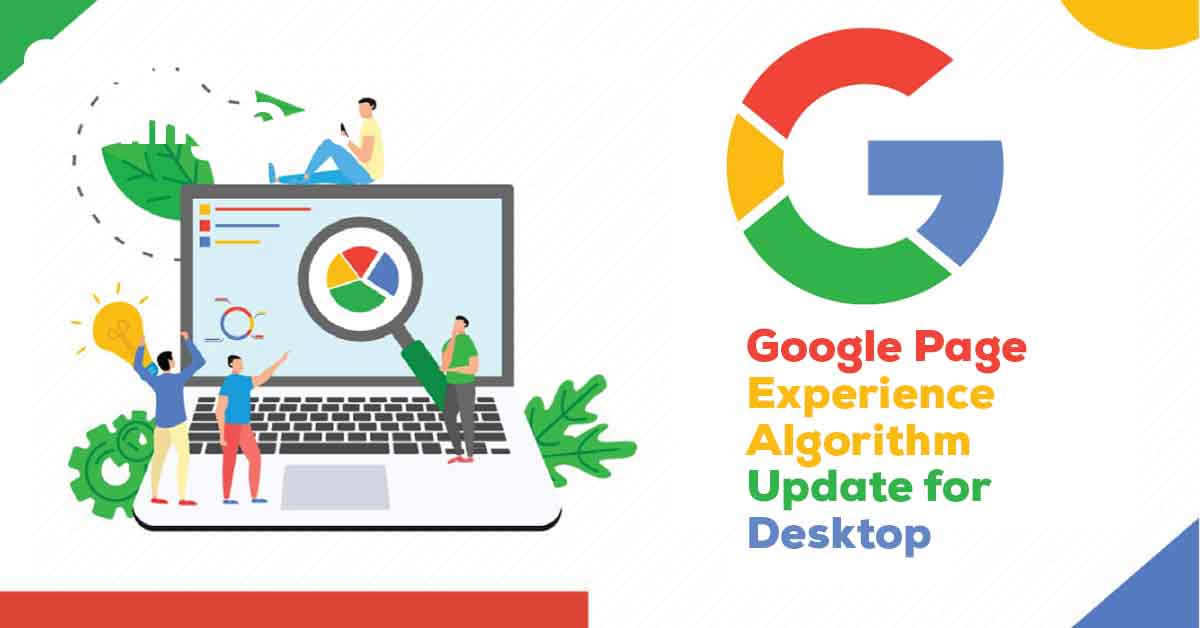Posted At: Aug 21, 2024 - 217 Views

Google announced the Google Desktop Page Experience Algorithm update from February 2022. As this update can significantly affect the site's ranking in Google search results, website owners must understand when these changes are made and how they may affect your site's rankings. Various modifications are expected. This includes evaluating multiple signals such as mobile compatibility, site speed, security, and using HTTPS to determine where your page or site should rank in Google's rankings. For individuals or companies that use search engine optimization (SEO) as part of their marketing, it is essential to understand and prepare for future updates.
What is the Google Desktop Page Experience Update?
Google's latest search algorithm, called Page Experience Update, is a significant update compared to many other popular updates that Google has made. For this reason, the company first announced in May 2020 and made more announcements than usual about future changes. What happens in the Google algorithm update is a review of some of the most important page experience signals, for example, the web biometric core values and the most important carousel feature in Google search.
Timeline to Roll Out the Experience Page
Recently, Google announced that it will launch Google Desktop Page Update in February 2022. This change will affect each site's SEO ranking in relevant Google search results.
What Can Website Owners Expect From the Changes, and How Can They Prepare?
There are many changes, but the page order does not change significantly. As mentioned earlier, upcoming page experience updates will consider core web features and the essential story features in Google site search results. Some of the features that you'll see in Google Desktop Page Experience Update are as follow:
Core Web Vitals - Core Web Vitals are page experience indicators. This shows the speed of the web page to create a great page experience for all users. As the page experience is planned to change, each will be a Google search engine ranking factor. The Core Web Vitals report contains three Page Experience metrics, each of which can be viewed below Most considerable Total Paint Content (LCP) - these metric measures the speed at which a page loads so that site visitors can see what is being displayed on the screen. The higher rate guarantees a higher Google Desktop Page Experience.
- First Input Delay (FID) - This Page Experience Metric measures how quickly a visitor interacts with your page. Clicking the button is an example of this interaction.
- Cumulative Layout Shift (CLS) - The faster the visitor can visualize the page's content, the happier he is. A hasty visitor may lose patience and leave a page or website entirely, but with a delay of only a few seconds.
For these three-speed signals to show your site's performance, Google has a free tool called Page Speed Insights. You can see the accelerometer for each page separately. Another Google free tool that can be very useful is the Search Console tool. With this tool, in addition to speed issues, you can find other technical problems that may appear on your site.
Additional Page Experience Signals
These are some other page experience ranking signals measurements and should be well understood.
- Security-Sites with open security issues are not subject to a 'good' page experience at any URL. Without the guarantee of safe browsing, a website is not likely to provide a good user experience.
- HTTPS - A website must also be submitted over HTTPS to qualify for 'Good' status.
- UX Advertising - Advertising is a necessary and valuable part of digital marketing, but if it seems annoying and distracting, it prevents website visitors from having a great site experience. Google can flag pages with bad ad experiences. This automatically loses the user experience on all other website pages.
Once you've evaluated each of the Page Experience signals above, you can generate a Page Experience report that allows measuring the percentage of URLs on sites that provide a great user experience. Another update accompanies the above in the Google Search Performance Report. You will be able to filter the data on the pages that provide a great user experience.
As for Google News, some changes are to be expected. One such factor is the increasing use of non-AMP content across news.google.com and mobile apps. The AMP badge currently denotes AMP content. With the change from February- March 2022, Google will remove these badges. Top stories in Google Search have been updated to show all news content that meets the requirements of the Google News policies. These sites and pages must meet the Hard Page Experience Standards.
Some of the changes expected from the Google Desktop Page Experience update start in February 2022. Website owners can be prepared by understanding the current Google algorithms and how they will change. With this information and the free tools that Google provides to evaluate your site's performance, you can create a better place with checkboxes for the essential components of a page experience.
Various improvements in website design, search engine optimization, and digital marketing can improve signals such as mobile usability, website reliability, website speed, and ultimately placement. Your page won't rank highly from day to day, but if you warm up now and follow Google's development to try out the new page, you could be on the cutting edge of the game.
Contact us if you need help setting up your website to update the Google Desktop Page Experience algorithm.








